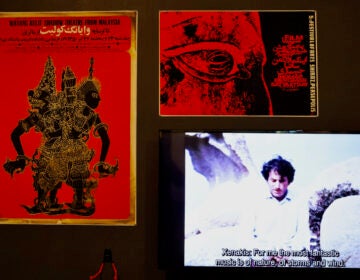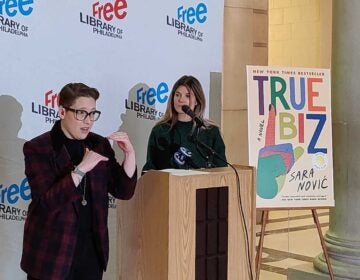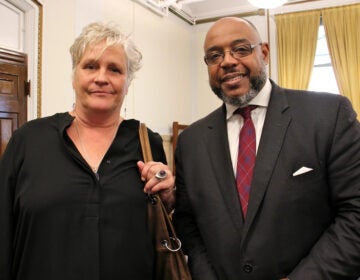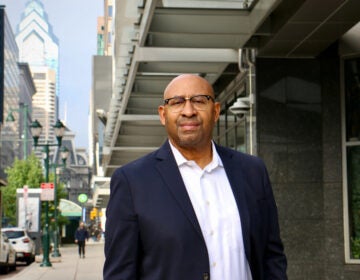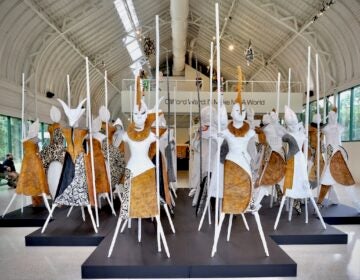Michener Museum shows 40 years of helping artists get a leg up
A retrospective at Michener Museum features artists who have gained professional development over the last four decades.
Listen 1:26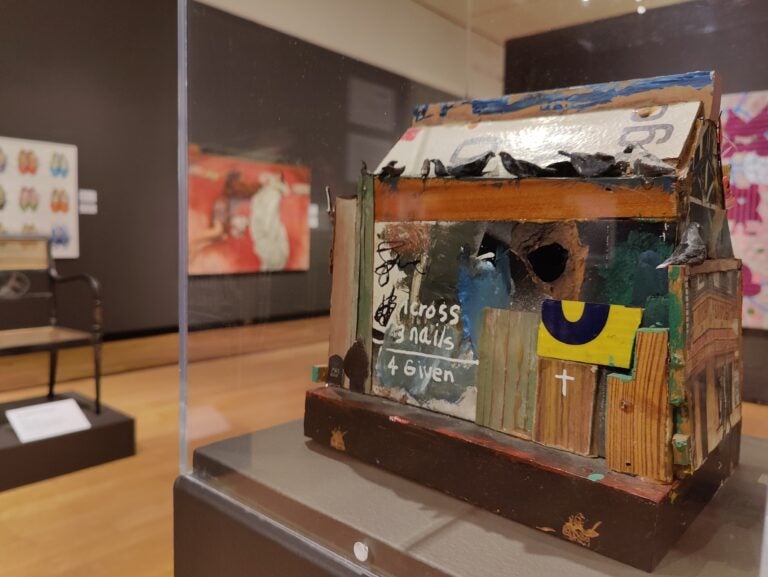
''Crosswalk'' (2000) by Leroy Johnson, a CFEVA fellow in 2019.
From Philly and the Pa. suburbs to South Jersey and Delaware, what would you like WHYY News to cover? Let us know!
When Ron Tarver arrived in Philadelphia in 1983 to take a job as a photojournalist at the Philadelphia Inquirer, he believed he had found his “forever” job. Which, effectively, he had. Tarver would spend 32 years at the newspaper.
But it wasn’t enough.
“As a photojournalist you get up every day, you go out and take a picture, you put in the paper,” he said. “And then that paper goes in the birdcage.”
What if Tarver could take pictures that lasted more than a day? It was something he had never considered: What if he could be an artist?
“It was a revelation to think that a photograph could be an object that is valued,” said Tarver, who now chairs the art department at Swarthmore University. “I hadn’t really thought about my work that way. For somebody to actually want to put it in a museum, or put it in a collection, was so new to me.”
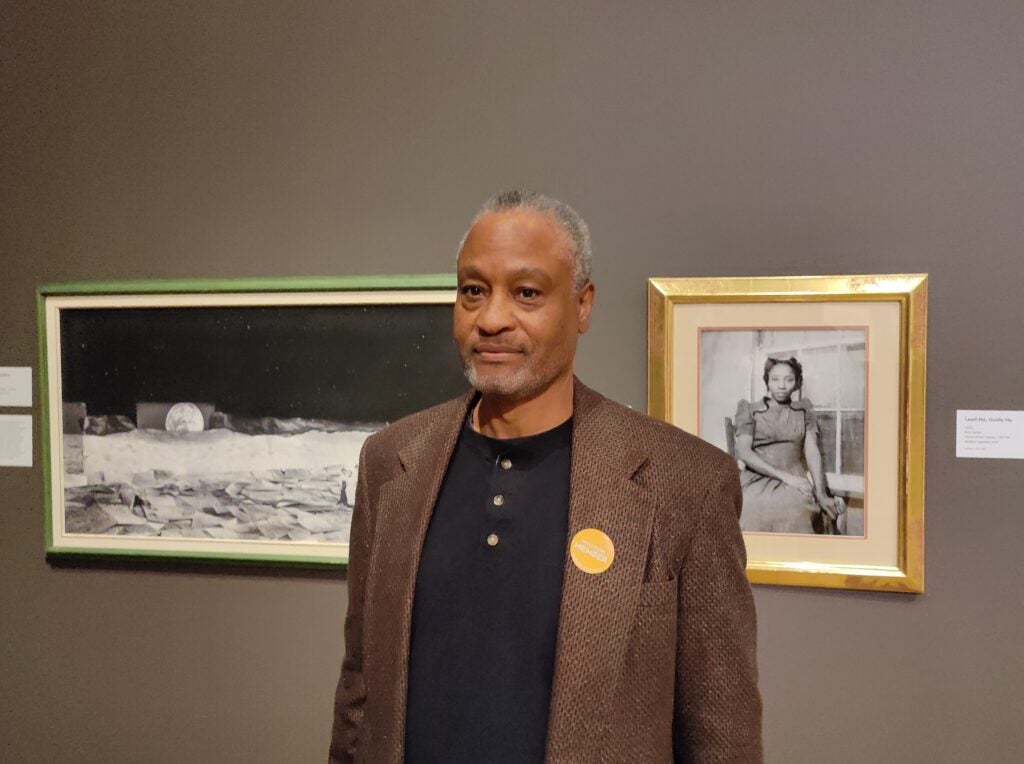
To realize that dream, in 1997 Tarver applied to be a fellow at the Center for Emerging Visual Artists — then called Creative Artists Network — a two-year professional development program that helps artists navigate the art world, make crucial connections with mentors and collectors, and develop their practice backed up by a $4000 stipend.
The Michener Museum, in Doylestown, Pa., is now showing “CFEVA at 40: Four Decades of Supporting Contemporary Art,” featuring work by 40 artists who have been involved with the Center for Emerging Visual Artists, including Don Camp, Collette Fu, Henry Bermudez, Charles Burwell, and Will Barnet. About 300 Philadelphia area artists have passed through CFEVA since it began in 1983.
“You’ll find in Europe particularly there is such great support for visual artists. There’s government support at a very high level,” said former board chair Maida Milone, who co-curated the exhibition. “But in the states, while we have some modest support from government, it’s nothing like it is in other countries. So nonprofits like ours have to step in and try to make the difference.”
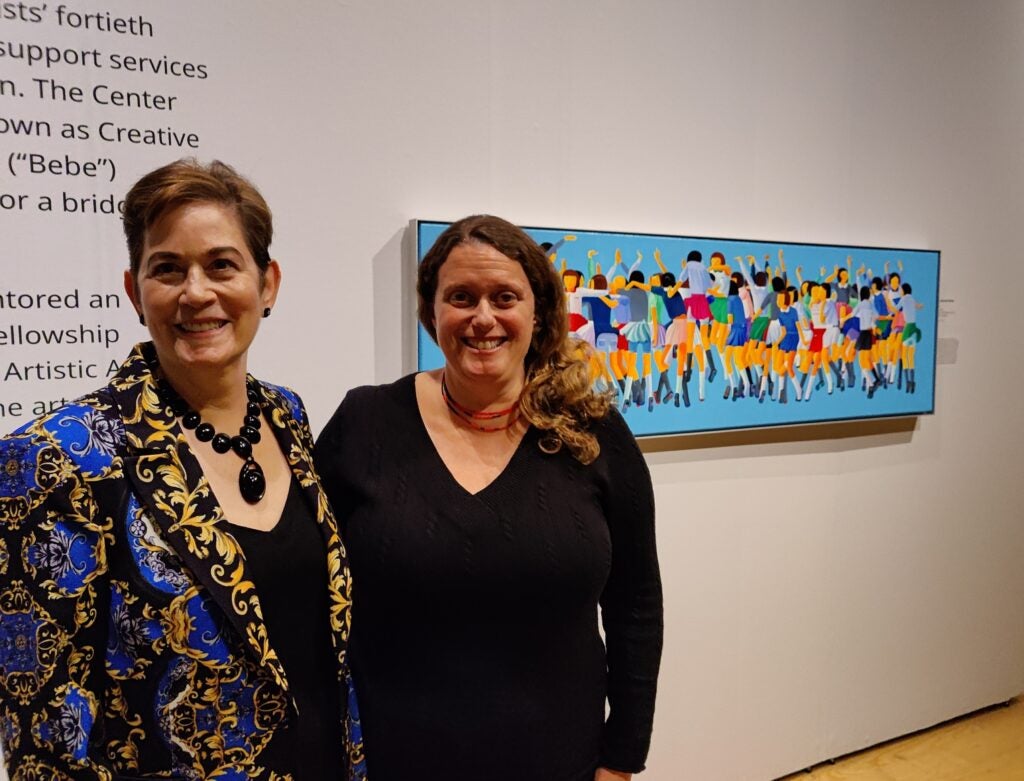
The work in the exhibition was not necessarily made during the artist’s fellowship. Milone said the pieces were chosen based on quality, not chronology. Several pieces are brand new and never before exhibited.
“Charles Burwell finished his piece a day or two before we were able to pick it up,” said co-curator and CFEVA artistic director Genevieve Coutroubis. “Vincent Desiderio was still tinkering with his piece up until the moment that the art movers arrived at his studio to drive the piece here.”
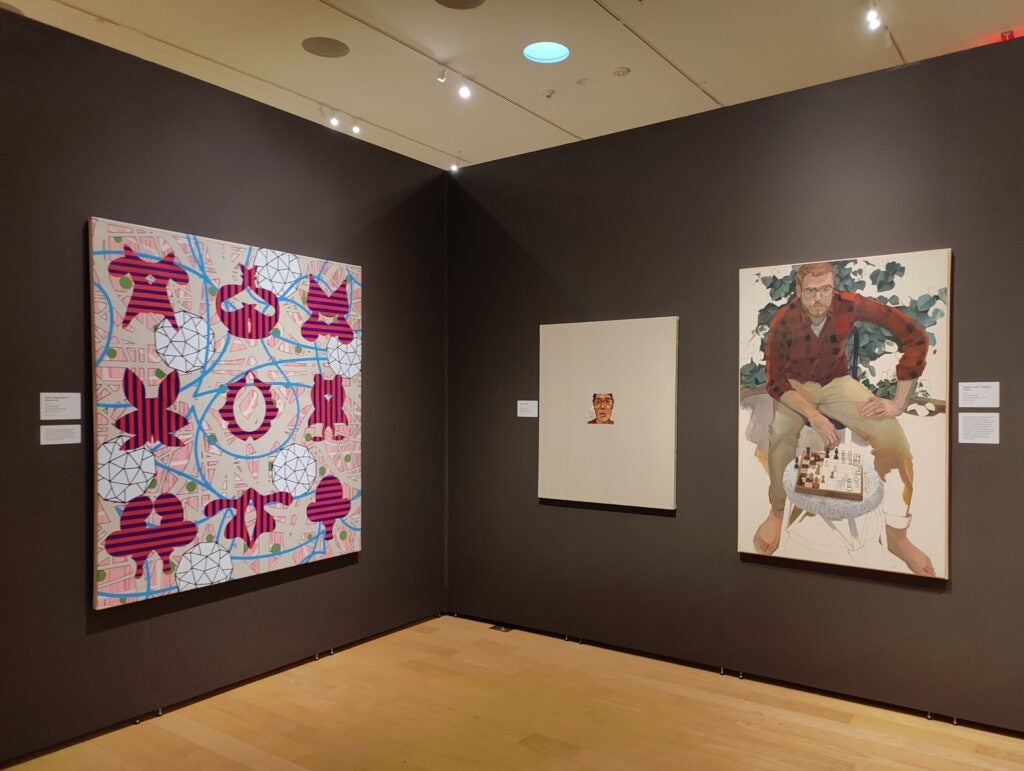
The exhibition features two delicately patterned and detailed drawings by Henry Bermudez, from 2010 and 2012, featuring mythological birds. Originally from Venezuela, Bermudez sought asylum in Philadelphia in 2003, fleeing the political upheaval in his home country under president Hugo Chavez. He had to rebuild his art career in a new country. Bermudez became a CFEVA fellow in 2016.
The show features a trio of realist paintings of tree trunks by Trey Friedman, whose “Trees on a Line” series is an attempt to depict his “intangible” relationship to old-growth trees. “Try talking about trees without sounding sentimental or political,” he wrote on his website.
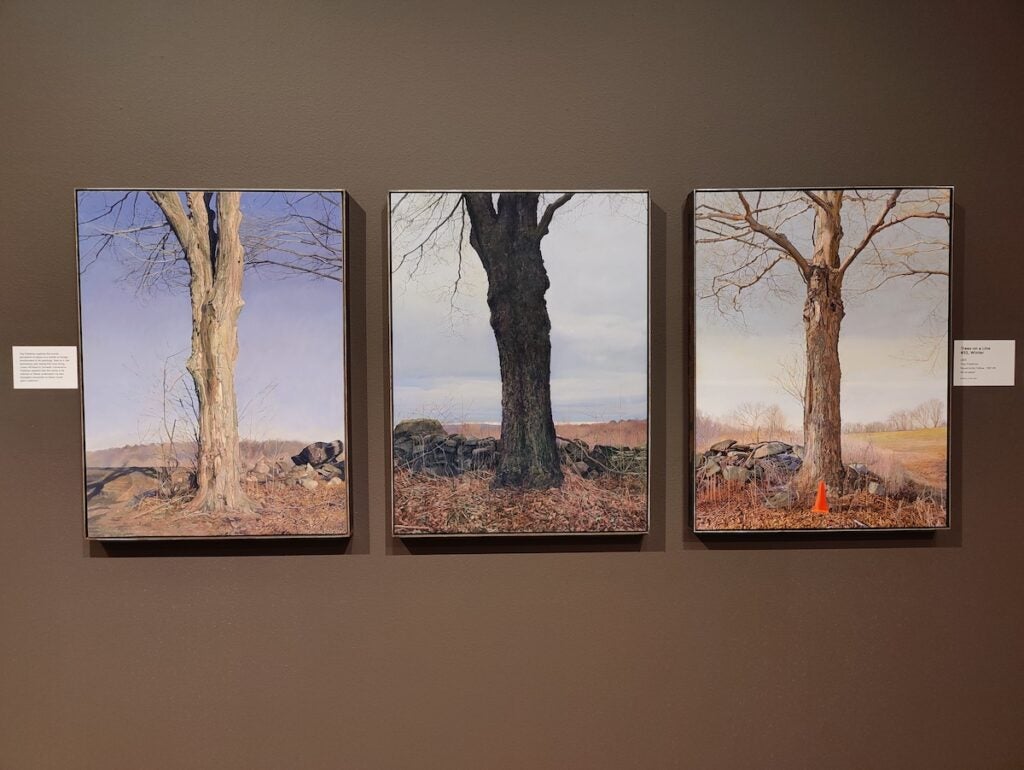
Furniture maker Sophie Glenn is a current CFEVA fellow, and contributed a caned chair that appears to be made of turned wood, but is actually painted steel. A medallion on the chair back features an image of a shirtless Jason Alexander, aka George Constanza in the TV show, “Seinfeld.” Poking fun at the history and craft of American furniture design, she calls it “Gorgeous George,” the ring name of a famous wrestler in the 1940s and 50s.
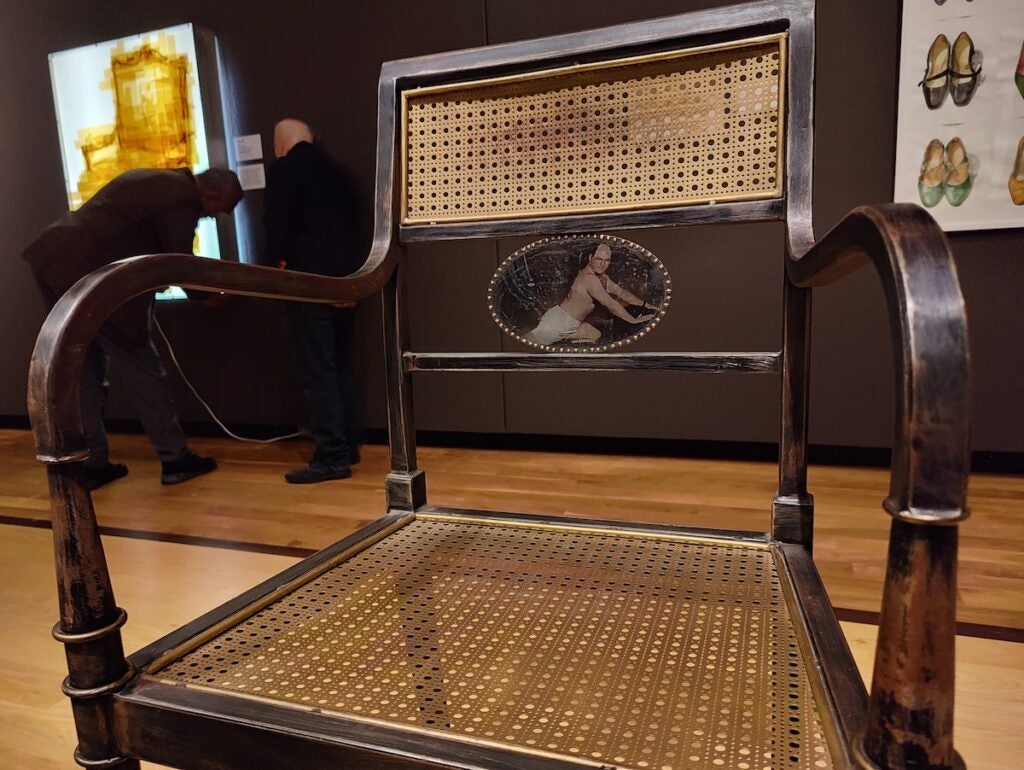
Mary Henderson just completed her two-year fellowship in 2023. She had applied to find help balancing her many lives as teacher, curator, artist, and mother.
“I have a couple of kids. I’ve been putting my head down and working and painting and not really connecting as much as I would have liked to the Philadelphia art scene,” she said. “The array of really fantastic artists that have passed through that program — I felt like it had to be something worthwhile.”
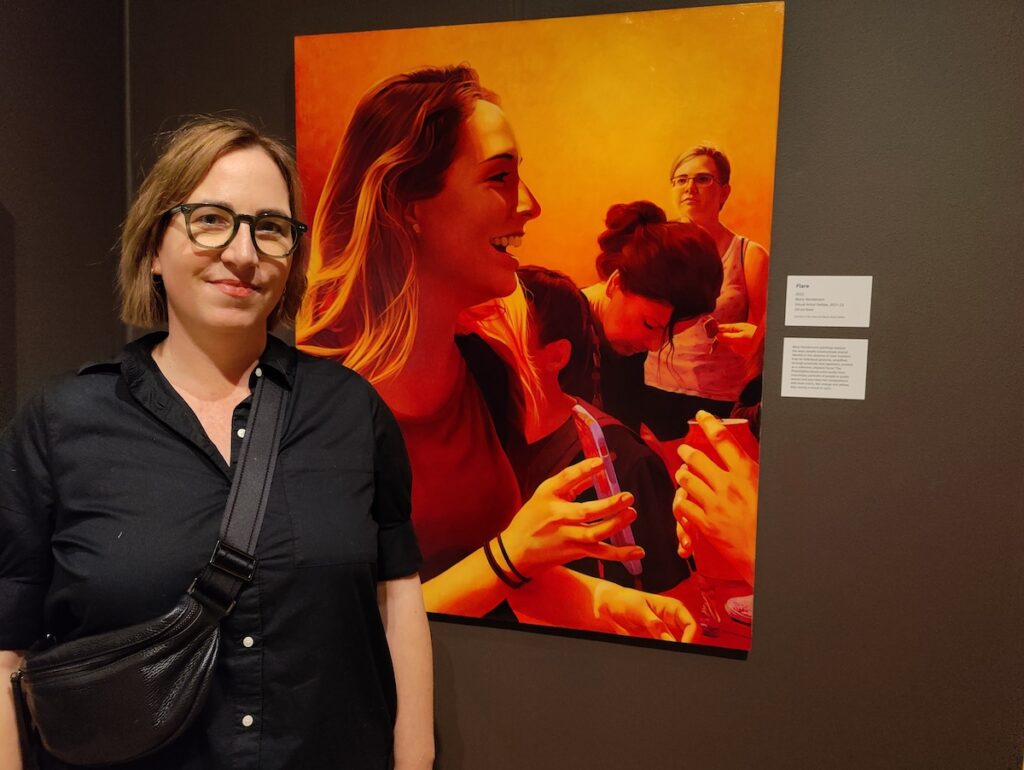
Andrea Packard contributed a triptych of carved and inked wood panels depicting an imagined forest scene, “Midnight Glory.” In 1995 she was a CFEVA fellow, when it was still called C.A.N., freshly graduated from the certificate program at the Pennsylvania Academy of the Fine Arts.
Packard was attracted to the way the fellowship could be tailored to an artist’s personal circumstances in their life and work.
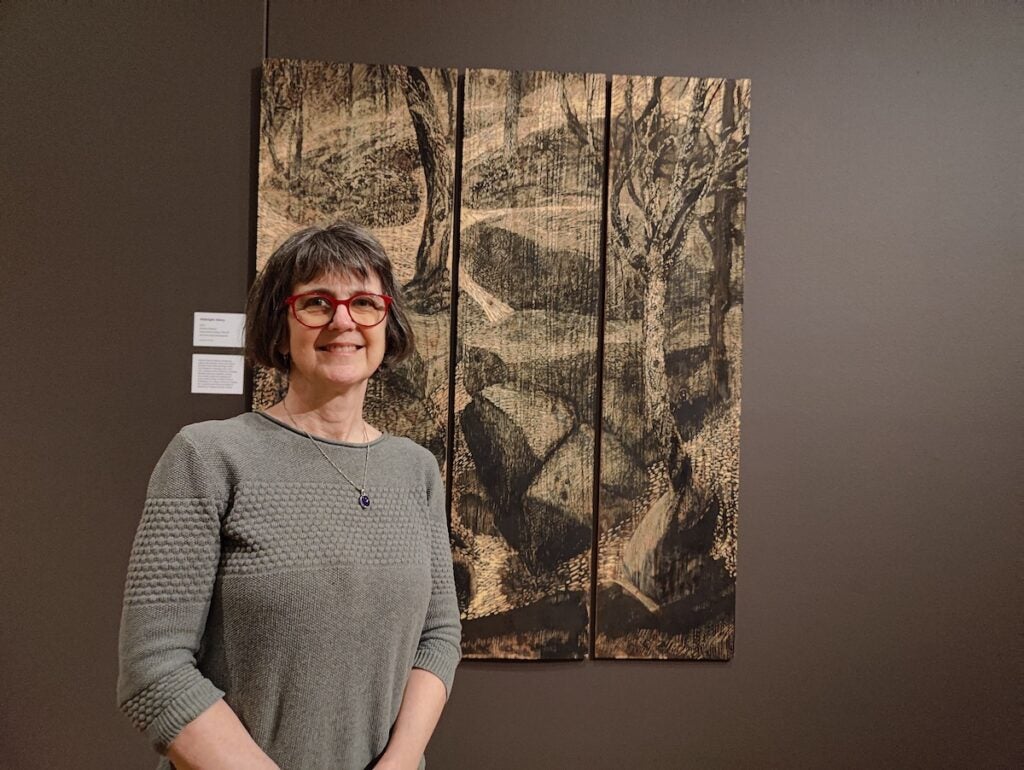
“The journey of art is very long and there are many transition points,” Packard said. “Transitioning from an art school program or, say, after having a family, it helps to reconnect and have support. There are many residency programs, but C.A.N. provided more holistic guidance and community, one that’s always changing.”
“CFEVA at 40” will be on view at the Michener Museum until May 26.
WHYY is your source for fact-based, in-depth journalism and information. As a nonprofit organization, we rely on financial support from readers like you. Please give today.



